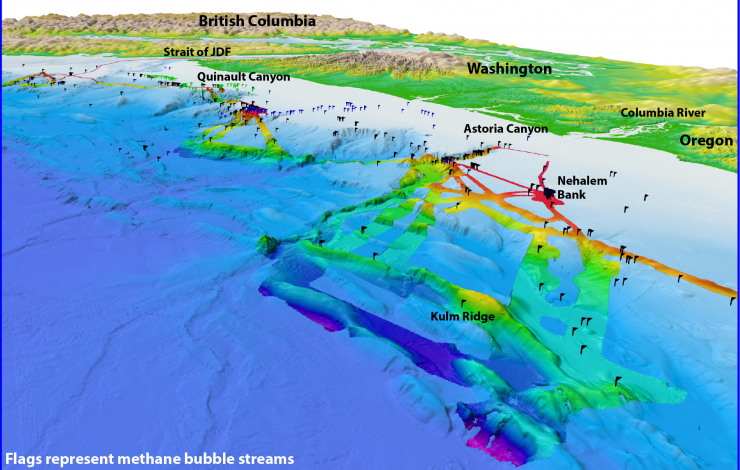
E/V Nautilus expedition NA080 leg 2 begins the evening of May 22 and continues through June 5 mapping the seafloor and water column in search of methane bubble emission sites. This part of the Ocean Exploration Trust (OET) expedition is a continuation of work that was done last summer for PMEL Earth Ocean Interactions (EOI) Program on the Cascadia Margin, offshore Washington, Oregon, and Northern California. 2016 expeditions NA072 and NA078 resulted in the discovery of 905 individual methane bubble streams that were clustered into 317 emission sites. The vast majority of those sites were previously unknown. The purpose of this exploration is to establish a baseline of methane bubble emission sites and methane-derived habitat (carbonate hardground) for the Cascadia margin. A warming ocean could disassociate some of the solid methane hydrate now locked up in the sediments along continental margins at >~ 500 m depth. Methane is a potent greenhouse gas so there is interest in understanding what happens to the methane as it rises through the water column. Does it make it into the atmosphere? Does it contribute to ocean acidification? There is also interest in the extent of the seep habitat and associated hardgrounds from the perspective of essential fisheries habitat. Those are just a few of the questions EOI scientists are hoping to answer with this research. You can follow the expedition here:


